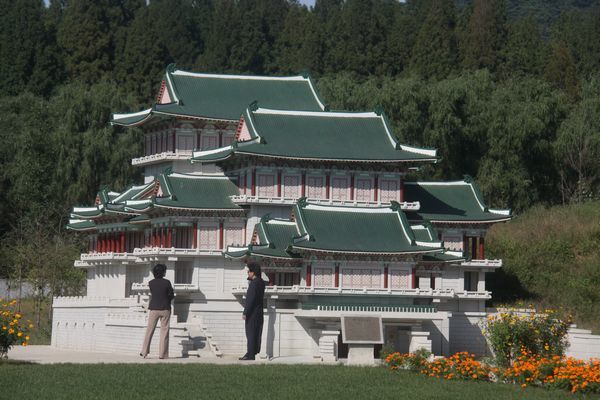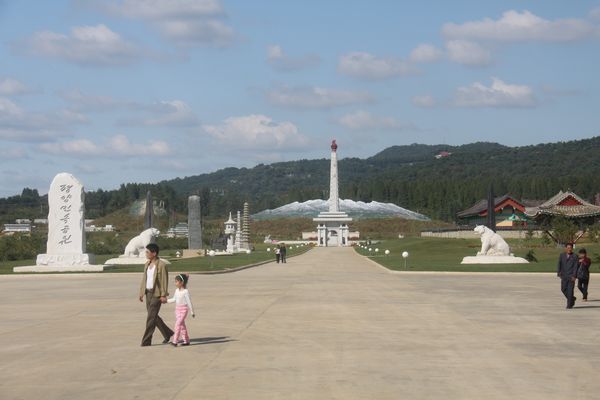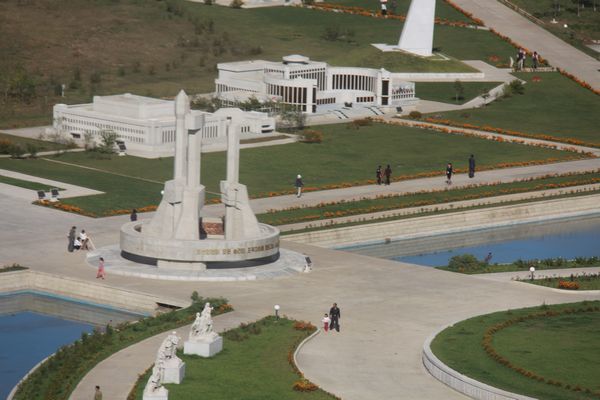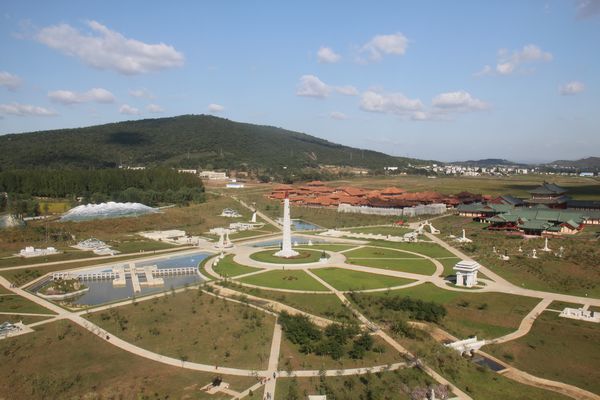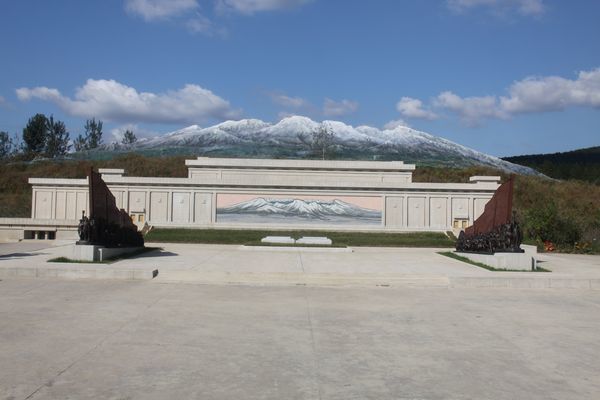Mini-Pyongyang
Mini-Pyongyang
History of Mini-Pyongyang
Sites at Mini-Pyongyang
Visiting Mini-Pyongyang
Mini-Pyongyang Today
The tale of Mini-Pyongyang (the official name: Pyongyang Folklore Park was a bit clunkier) is a true curiosity indeed.
Mini-Pyongyang was a major project designed for locals and tourists to enjoy. It lasted just a handful of years before being removed from the face of the city in short order.
Looking back, it is sometimes hard to believe that this was a real place and didn’t just exist in a kind of mass fever-dream, but it was indeed real, and it was quite a place to visit, let’s revisit it here!
History of Mini-Pyongyang
Officially opened in 2012, although under construction for a few years prior to that (it could be seen from the top of the Revolutionary Martyrs’ Cemetery), leading to much speculation among regular visitors to that site as to what exactly was being built, a video of the opening ceremony and a brief tour can be found online here.
Sites at Mini-Pyongyang
This park was not one of those model villages that is simply a smaller scale model of the whole town, but instead a collection of scale versions of many of the iconic buildings of Pyongyang plus a selection of major landmarks from across the country and from Korean history too.
First the Pyongyang sites; this is what foreigners would gravitate to, disregarding the fact that you would be seeing the full-sized versions on a tour anyway, here you could walk around and see smaller versions of the Indoor Stadium, Juche Tower, Arch of Triumph, May Day Stadium, Ryugyong Hotel, and many more instantly recognisable buildings. One curious thing was that they were not all built to the same scale. The Indoor Stadium was about as tall as a man, but the Ryugyong Hotel (which is many times higher in real life) was only about 2-3 times taller, of course there are logistical reasons for this but it did create a bit of dissonance.
The miniature version of Kim Il Sung Square with the Grand People’s Study House behind it was one of the highlights. There was even a small scale military parade going on in the square too, just missing model massed crowds. That would have been something to add, but also harder to maintain!
Mansudae Grand Monument was also present here.
This created some difficulty as the scale it was built to meant that when the model statues of Kim Il Sung and Kim Jong Il were added (initially they were not present, just the bases were there) the statues were around 5 feet in height. This was shorter than many of the visitors, and as photos were permitted at this place it was hard to find a way to shoot at such an angle to fulfil the Koreans’ request that nobody be higher than the statues themselves. This part may not have been totally thought-out by the creators of the park in advance.
In addition to the main sites of Pyongyang there was also other famous structures (such as the West Sea Barrage) and iconic natural areas; Mt. Paektu, Mt. Kumgang, and a selection of royal tombs and more ancient monuments too, important for showing foreign visitors that there is a deeper past in Korea than just the 20th and 21st Centuries.
Visiting Mini-Pyongyang
Speaking of visitors, the vast vast majority were local Koreans, from Pyongyang and elsewhere.
This place was never hugely popular with foreign tourists, a pity because it was great fun and a good chance to wander freely for a little while.
Many local visitors would spend more time in the section of the park devoted to pre-DPRK Korea too (as it no longer existed after all, whereas you could see the Juche Tower from most of Pyongyang still). In these areas you could dress up, see building styles from various dynastic periods. These were less popular than the Pyongyang parts for most western tourists, but had a lot of charm and were well laid-out too. There are also Folk Parks in some other parts of the DPRK (such as the Sariwon Folklore Park), focused on the history of Korea, but they are much smaller than this place and less detailed.
In the western part of the park was a tall pagoda, built to a 1:1 specification from a historical building. This was an ideal structure to climb to get aerial views of the park itself and also a view over to the site of the Anhak Palace, site of archaeological excavation which is ongoing.
Mini-Pyongyang Today
As all things pass this place passed too, the light that burns twice as light burns half as long and a mere 4 years after opening the park was closed and rapidly demolished.
Completely and utterly.
There was media speculation as to why this had happened at the time (suggestions that the construction was linked to various since-disgraced figures and so on), but nothing was ever stated officially, so it remains a bit of a mystery, and a pity too as this was a fun and interesting place.
For foreign tourist - not so useful. You would hardly come all the way to Pyongyang just to see a small version of Pyongyang instead of the 1:1 scale real thing right next door!
But for longer tours, and for a chance to wander around with groups of locals posing for photos, learning about their city and history, it was unparalleled.
Mini-Pyongyang we mourn you and miss you!
Koryo Tours founder Nick Bonner wrote about his personal experiences here in a blog post.
Interested in a tour to North Korea?
Travel to North Korea with the only
North Korea travel experts, Koryo Tours
North Korea Travel Guide PDF | Sign up to the mailing list | About Koryo Tours
